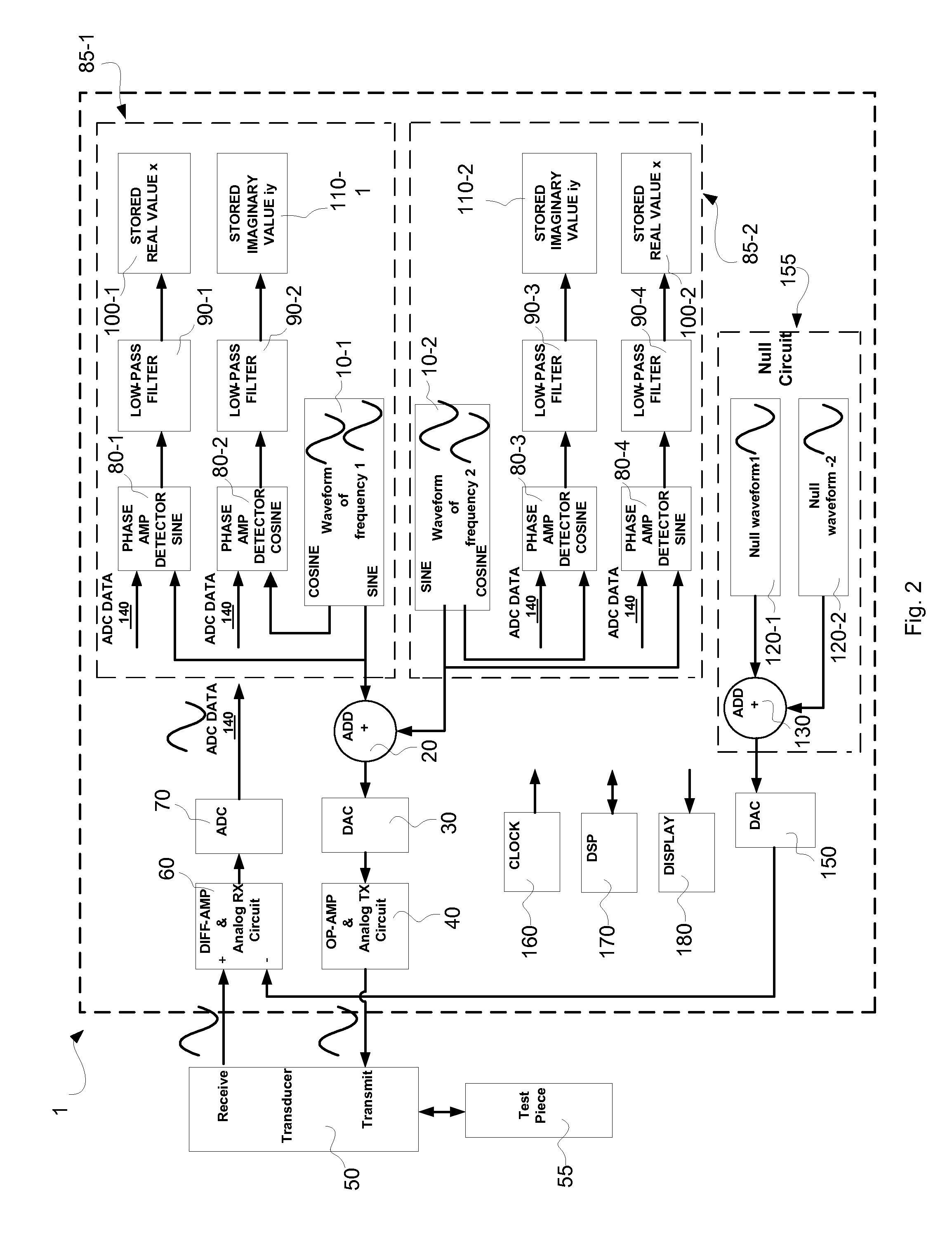Circuitry for measuring and compensating phase and amplitude differences in NDT/NDI operation
a phase and amplitude difference technology, applied in the direction of noise figure or signal-to-noise ratio measurement, instruments, machines/engines, etc., can solve the problems of large inspection errors, high noise levels, and amplitude and phase of responding signals often shifting from their original detection ones, so as to reduce manufacturing costs, reduce noise ratios, and reduce the development cycle
- Summary
- Abstract
- Description
- Claims
- Application Information
AI Technical Summary
Benefits of technology
Problems solved by technology
Method used
Image
Examples
Embodiment Construction
[0028]The measurement of phase and amplitude is continuously monitored for differences between responding signals and transmit (detecting) signals by continuously injecting a transmit signal into the test piece and monitoring the responding signal from the test piece. A herein disclosed null compensation is done once during a calibration session before measurement with the transducer un-coupled from the test piece, to compensate for phase and amplitude differences caused by system and test piece's intrinsic properties such as the transducer and electrical circuitry.
[0029]It should be noted that when referring to numerals of items in the figures, a numeral without a post-suffix is meant to denote all items in the figure that bear the same numeral with a post suffix. For example, digital waveform generator 10 shown in FIGS. 1 and 2 is meant to denote all and each waveform generator of the same kind, namely 10-1, 10-2, and so on.
[0030]It should be noted that the present disclosure pres...
PUM
 Login to View More
Login to View More Abstract
Description
Claims
Application Information
 Login to View More
Login to View More - R&D
- Intellectual Property
- Life Sciences
- Materials
- Tech Scout
- Unparalleled Data Quality
- Higher Quality Content
- 60% Fewer Hallucinations
Browse by: Latest US Patents, China's latest patents, Technical Efficacy Thesaurus, Application Domain, Technology Topic, Popular Technical Reports.
© 2025 PatSnap. All rights reserved.Legal|Privacy policy|Modern Slavery Act Transparency Statement|Sitemap|About US| Contact US: help@patsnap.com



